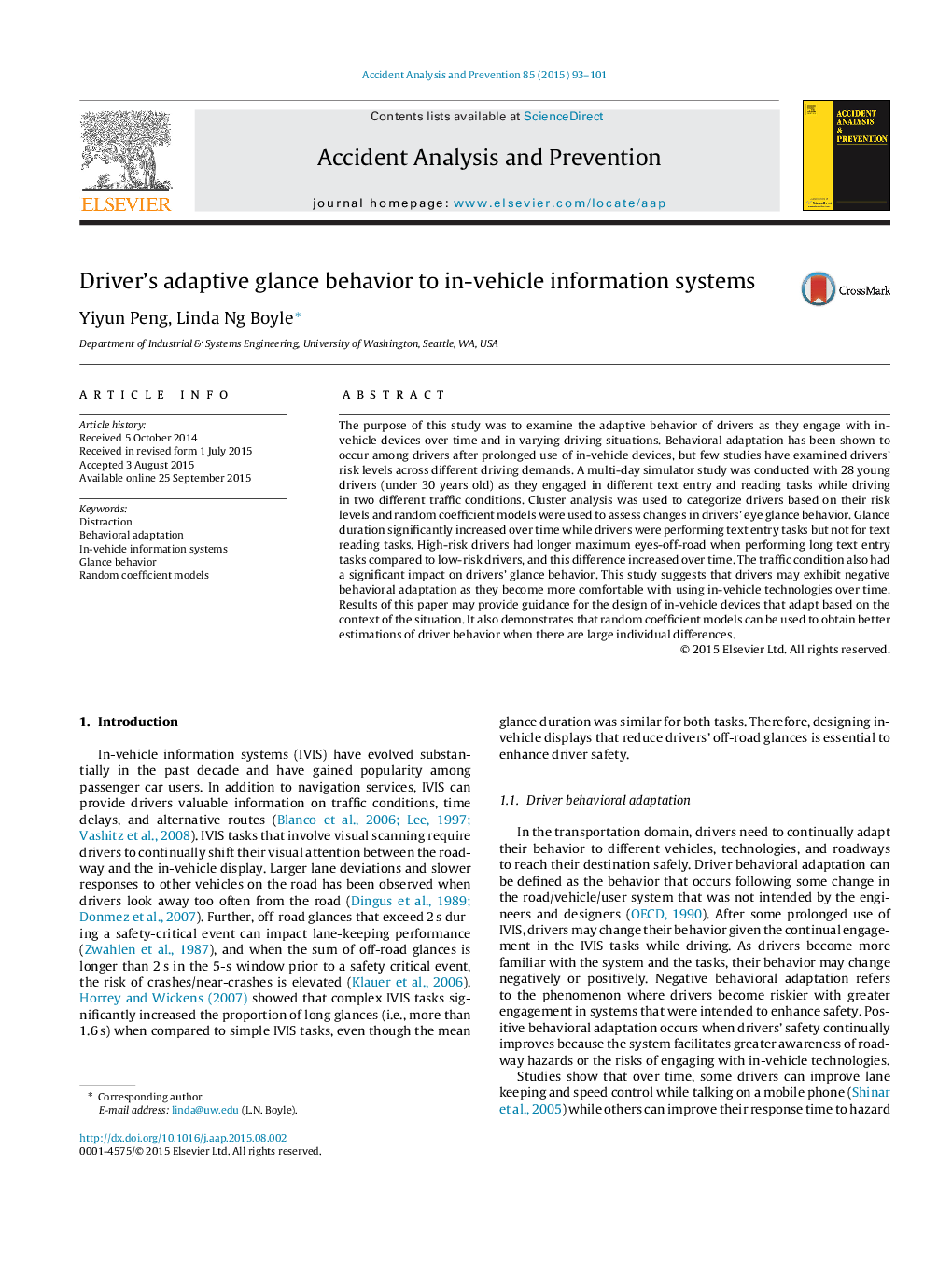| کد مقاله | کد نشریه | سال انتشار | مقاله انگلیسی | نسخه تمام متن |
|---|---|---|---|---|
| 572127 | 1452912 | 2015 | 9 صفحه PDF | دانلود رایگان |
• Drivers’ behavioral adaptation was examined using in-vehicle devices in a multi-day simulator study.
• High-risk drivers had more negative adaptive behavior than low-risk drivers.
• Drivers glanced off road more often during text entry tasks than text reading tasks.
• Eye glance behavior changed over time and for different traffic conditions.
The purpose of this study was to examine the adaptive behavior of drivers as they engage with in-vehicle devices over time and in varying driving situations. Behavioral adaptation has been shown to occur among drivers after prolonged use of in-vehicle devices, but few studies have examined drivers’ risk levels across different driving demands. A multi-day simulator study was conducted with 28 young drivers (under 30 years old) as they engaged in different text entry and reading tasks while driving in two different traffic conditions. Cluster analysis was used to categorize drivers based on their risk levels and random coefficient models were used to assess changes in drivers’ eye glance behavior. Glance duration significantly increased over time while drivers were performing text entry tasks but not for text reading tasks. High-risk drivers had longer maximum eyes-off-road when performing long text entry tasks compared to low-risk drivers, and this difference increased over time. The traffic condition also had a significant impact on drivers’ glance behavior. This study suggests that drivers may exhibit negative behavioral adaptation as they become more comfortable with using in-vehicle technologies over time. Results of this paper may provide guidance for the design of in-vehicle devices that adapt based on the context of the situation. It also demonstrates that random coefficient models can be used to obtain better estimations of driver behavior when there are large individual differences.
Journal: Accident Analysis & Prevention - Volume 85, December 2015, Pages 93–101
